336 books about Electronics and 18
start with R
336 books about Electronics and 18
336 books about Electronics
18 start with R start with R
18 start with R start with R
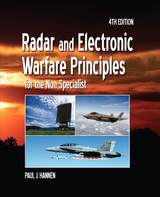
Radar and Electronic Warfare Principles for the Non-Specialist
Paul Hannen
The Institution of Engineering and Technology, 2014
This book presents a comprehensive set of radar and electronic warfare principles including many of the latest applications in a clear and consistent manner.
[more]

Radio Direction Finding and Superresolution
P.J.D. Gething
The Institution of Engineering and Technology, 1991
This is an enlarged and revised second edition of a book first published in 1978 and reprinted twice since then. The new edition includes updates to all the original chapters, plus two new chapters on developments in superresolution techniques and their application to direction-finding arrays.
[more]
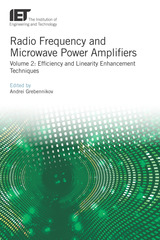
Radio Frequency and Microwave Power Amplifiers
Efficiency and Linearity Enhancement Techniques, Volume 2
Andrei Grebennikov
The Institution of Engineering and Technology, 2019
Radio Frequency and Microwave Power Amplifiers are finding an increasingly broad range of applications, particularly in communications and broadcasting, but also in the industrial, medical, automotive, aviation, military, and sensing fields. Each application has its own design specifications, for example, high linearity in modern communication systems or high efficiency in broadcasting, and, depending on process technology, capability to operate efficiently at very high frequencies, such as 77 GHz and higher for automotive radars. Advances in design methodologies have practical applications in improving gain, power output, bandwidth, power efficiency, linearity, input and output impedance matching, and heat dissipation.
[more]
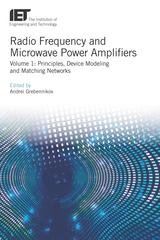
Radio Frequency and Microwave Power Amplifiers
Principles, Device Modeling and Matching Networks, Volume 1
Andrei Grebennikov
The Institution of Engineering and Technology, 2019
Radio Frequency and Microwave Power Amplifiers are finding an increasingly broad range of applications, particularly in communications and broadcasting, but also in the industrial, medical, automotive, aviation, military, and sensing fields. Each application has its own design specifications, for example, high linearity in modern communication systems or high efficiency in broadcasting, and, depending on process technology, capability to operate efficiently at very high frequencies, such as 77 GHz and higher for automotive radars. Advances in design methodologies have practical applications in improving gain, power output, bandwidth, power efficiency, linearity, input and output impedance matching, and heat dissipation.
[more]

Radio Frequency and Microwave Power Amplifiers
Theory, design and applications
Andrei Grebennikov
The Institution of Engineering and Technology, 2019
Radio Frequency and Microwave Power Amplifiers are finding an increasingly broad range of applications, particularly in communications and broadcasting, but also in the industrial, medical, automotive, aviation, military, and sensing fields. Each application has its own design specifications, for example, high linearity in modern communication systems or high efficiency in broadcasting, and, depending on process technology, capability to operate efficiently at very high frequencies, such as 77 GHz and higher for automotive radars. Advances in design methodologies have practical applications in improving gain, power output, bandwidth, power efficiency, linearity, input and output impedance matching, and heat dissipation.
[more]

Radio Frequency and Microwave Power Measurement
Alan E. Fantom
The Institution of Engineering and Technology, 1990
The need to measure electrical power is common to many branches of science and engineering. This book presents a wide-ranging survey of the many types of radio-frequency and microwave power meter and the techniques which are used for calibrating and intercomparing them. The frequency range is 1 MHz to 200 GHz.
[more]
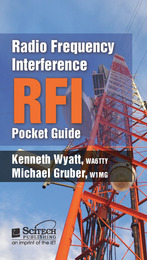
Radio Frequency Interference (RFI) Pocket Guide
Kenneth Wyatt
The Institution of Engineering and Technology, 2015
This handy pocket guide to essential radio frequency interference (RFI) is a valuable, pocket-sized reference for radio amateurs and others in the radio communication fields.
[more]
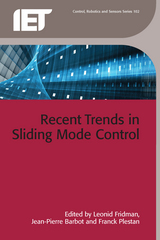
Recent Trends in Sliding Mode Control
Leonid Fridman
The Institution of Engineering and Technology, 2016
In control theory, sliding mode control, or SMC, is a nonlinear control method that alters the dynamics of a nonlinear system by application of a discontinuous control signal that forces the system to 'slide' along a cross-section of the system's normal behaviour. This book describes recent advances in the theory, properties, methods and applications of SMC.
[more]
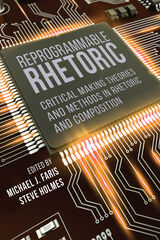
Reprogrammable Rhetoric
Critical Making Theories and Methods in Rhetoric and Composition
Michael J. Faris
Utah State University Press, 2022
Reprogrammable Rhetoric offers new inroads for rhetoric and composition scholars’ past and present engagements with critical making. Moving beyond arguments of inclusion and justifications for scholarly legitimacy and past historicizations of the “material turn” in the field, this volume explores what these practices look like with both a theoretical and hands-on “how-to” approach. Chapters function not only as critical illustrations or arguments for the use of reprogrammable circuits but also as pedagogical instructions that enable readers to easily use or modify these compositions for their own ends.
This collection offers nuanced theoretical perspectives on material and cultural rhetorics alongside practical tutorials for students, researchers, and teachers to explore critical making across traditional areas such as wearable sensors, Arduinos, Twitter bots, multimodal pedagogy, Raspberry Pis, and paper circuitry, as well as underexplored areas like play, gaming, text mining, bots, and electronic monuments.
Designed to be taught in upper division undergraduate and graduate classrooms, these tutorials will benefit non-expert and expert critical makers alike. All contributed codes and scripts are also available on Utah State University Press’s companion website to encourage downloading, cloning, and repurposing.
Contributors: Aaron Beveridge, Kendall Gerdes, Kellie Gray, Matthew Halm, Steven Hammer, Cana Uluak Itchuaqiyaq, John Jones, M.Bawar Khan, Bree McGregor, Sean Morey, Ryan Omizo, Andrew Pilsch, David Rieder, David Sheridan, Wendi Sierra, Nicholas Van Horn
This collection offers nuanced theoretical perspectives on material and cultural rhetorics alongside practical tutorials for students, researchers, and teachers to explore critical making across traditional areas such as wearable sensors, Arduinos, Twitter bots, multimodal pedagogy, Raspberry Pis, and paper circuitry, as well as underexplored areas like play, gaming, text mining, bots, and electronic monuments.
Designed to be taught in upper division undergraduate and graduate classrooms, these tutorials will benefit non-expert and expert critical makers alike. All contributed codes and scripts are also available on Utah State University Press’s companion website to encourage downloading, cloning, and repurposing.
Contributors: Aaron Beveridge, Kendall Gerdes, Kellie Gray, Matthew Halm, Steven Hammer, Cana Uluak Itchuaqiyaq, John Jones, M.Bawar Khan, Bree McGregor, Sean Morey, Ryan Omizo, Andrew Pilsch, David Rieder, David Sheridan, Wendi Sierra, Nicholas Van Horn
[more]

Retro-reflective Beamforming Technique for Microwave Power Transmission
Mingyu Lu
The Institution of Engineering and Technology, 2024
Microwave power transmission technology, which is a sub-discipline of the wireless power transmission technology, aims to transmit electrical power without using wires/cables in the microwave frequency band. The retro-reflective beamforming technique has the potential to enable efficient and safe microwave power transmission, as it includes the following two technical elements. First, a directional microwave beam is generated as the carrier of wireless power. Second, the microwave power beam could be steered in real time toward mobile wireless power receiver(s). This book offers a comprehensive narrative of retro-reflective beamforming in the context of microwave power transmission.
[more]
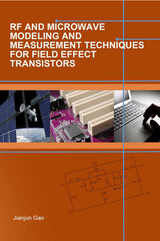
RF and Microwave Modeling and Measurement Techniques for Field Effect Transistors
Jianjun Gao
The Institution of Engineering and Technology, 2010
This book is an introduction to microwave and RF signal modeling and measurement techniques for field effect transistors. It assumes only a basic course in electronic circuits and prerequisite knowledge for readers to apply the techniques and improve the performance of integrated circuits, reduce design cycles and increase their chance at first time success. The first chapters offer a general overview and discussion of microwave signal and noise matrices, and microwave measurement techniques. The following chapters address modeling techniques for field effect transistors and cover models such as: small signal, large signal, noise, and the artificial neural network based.
[more]
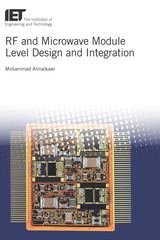
RF and Microwave Module Level Design and Integration
Mohammad Almalkawi
The Institution of Engineering and Technology, 2019
RF and Microwave Module Level Design and Integration presents a thorough introduction to the basic elements of radio frequency (RF) and microwave modules, followed by a discussion of system-level concepts and measures that can be applied to real-world designs. With a strong emphasis on design and integration, the book offers practical solutions to today's commonly encountered challenges in RF and microwave modules, including system integration, network loss reduction techniques, electromagnetic compatibility, crosstalk reduction techniques, computer-aided design tools, system-level modeling methodologies, and system-level performance evaluation via common RF measurements. Several design examples are presented across the book chapters.
[more]
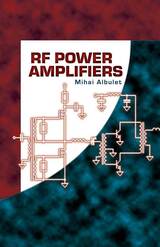
RF Power Amplifiers
Mihai Albulet
The Institution of Engineering and Technology, 2001
In this thorough overview, Mihai Albulet presents a full account of RF amplifiers and shows that understanding large-signal RF signals is simply a matter of understanding basic principles and their applications. In addition to discussing the basic concepts used in the analysis and design of RF power amplifiers, detailed mathematical derivations indicate the assumptions and limitations of the presented results, allowing the reader to calculate their usefulness in practical designs. Covered are amplification classes, circuit topologies, bias circuits, and matching networks.
[more]
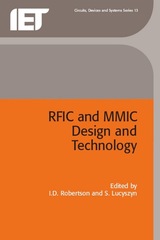
RFIC and MMIC Design and Technology
I.D. Robertson
The Institution of Engineering and Technology, 2001
RFIC and MMIC technology provides the core components for many microwave and millimetre-wave communications, radar and sensing systems. Recent years have seen exciting developments, such as circuits operating to over 200 GHz, millimetre-wave micromachined antenna arrays and microelectromechanical systems (MEMS). At the same time, the rapid growth of wireless communications in the 1 to 6 GHz range has seen a dramatic shift towards advanced silicon technology. It is timely, therefore, to introduce this fully up-to-date second edition of a world-renowned standard text.
[more]
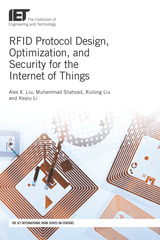
RFID Protocol Design, Optimization, and Security for the Internet of Things
Alex X. Liu
The Institution of Engineering and Technology, 2018
Radio-frequency identification (RFID) uses electromagnetic fields to automatically identify and track tags attached to objects. The tags contain electronically stored information. RFIDs have been widely used in countless applications such as object tracking, 3D positioning, indoor localization, supply chain management, automotive, inventory control, anti-theft, anti-counterfeit, and access control. The Internet of Things (IoT) promises a huge growth in RFID technology and usage.
[more]

Ridge Waveguides and Passive Microwave Components
J. Helszajn
The Institution of Engineering and Technology, 2000
The ridge waveguide, which is a rectangular waveguide with one or more metal inserts (ridges), is an important transmission line in microwave engineering, through which many passive components can be achieved. As such it is a well-established and widely used element in commercial electronics and communications devices. This book collects together much of the work of Professor Helszajn, an international authoriy in the field, and will enable the reader to have direct access to this material without need for exhaustive search of research papers. Generously illustrated, it is likely to become the definitive reference source on this topic. The book includes closed-form and finite element calculations of the propagation constant, attenuation and mode spectrum for the ridge waveguide, as well as power-current and power-voltage definitions of impedance. Circular polarisation is also treated. Propagation properties where the waveguide has a dielectric filler are calculated. The treatment is then extended to more complex designs, including quadruple ridge waveguides with and without a gyromagnetic filler. The text includes descriptions of many of the passive devices which can be realised using these waveguides, including isolators, phase shifters and circulators. A treatment of the finline waveguide is included as its geometry is closely related to that of the ridge waveguide, leading to components such as the 3-port finline calculator.
[more]

Robots and Automated Manufacture
J. Billingsley
The Institution of Engineering and Technology, 1985
To serve its purpose, an industrial robot must be harnessed to a manufacturing task, be it welding, assembly, adjustment or the inspection of food products. Complex tasks are likely to require offline programming, both for economy of equipment use and to permit computer simulations for collision avoidance. Vision and other sensory systems are helping to extend the capabilities of robots, while advanced programming techniques are making their use more accessible to the shop floor.
[more]
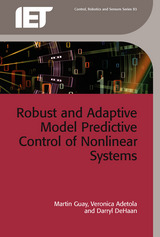
Robust and Adaptive Model Predictive Control of Nonlinear Systems
Martin Guay
The Institution of Engineering and Technology, 2016
Most physical systems possess parametric uncertainties or unmeasurable parameters and, since parametric uncertainty may degrade the performance of model predictive control (MPC), mechanisms to update the unknown or uncertain parameters are desirable in application. One possibility is to apply adaptive extensions of MPC in which parameter estimation and control are performed online. This book proposes such an approach, with a design methodology for adaptive robust nonlinear MPC (NMPC) systems in the presence of disturbances and parametric uncertainties. One of the key concepts pursued is the concept of set-based adaptive parameter estimation, which provides a mechanism to estimate the unknown parameters as well as an estimate of the parameter uncertainty set. The knowledge of non-conservative uncertain set estimates is exploited in the design of robust adaptive NMPC algorithms that guarantee robustness of the NMPC system to parameter uncertainty.
[more]
READERS
Browse our collection.
PUBLISHERS
See BiblioVault's publisher services.
STUDENT SERVICES
Files for college accessibility offices.
UChicago Accessibility Resources
home | accessibility | search | about | contact us
BiblioVault ® 2001 - 2024
The University of Chicago Press









